Floating market is a market located on the bank of the Barito River, precisely located in the two quarters of the District of Kuin Utara include Muara Kuin and Kuin River. Furthermore, in the area of South Alalak Village, North Banjarmasin Subdistrict, Banjarmasin City. Now, this market becomes one of the attractions offered by Banjarmasin City Government. This is because, the characteristics of the market that is above the river with the traders who mostly sell basic foods and vegetables.
When does this market exist? According to one of the descendants of Khatib Dayan-ulama of Banjar Kingdom-named Syarif Bistamy SE, the existence of Floating Market is not separated with the establishment of Banjar Kingdom around 1595.
However, Syarif believes based on historical records held by his family that the Floating Market was established or existed before the founding of the Kingdom of Banjar. Where, according to Syarif, Floating Market area is part of the river port named Bandarmasih. This river port includes the flow of Barito River, from the Kuin River to the Estuary of Sungai Kelayan, South Banjarmasin.
At that time, the management of river port was submitted to Patih Masih and Patih Kuin. Two 'rulers' believed to be Syarif and some Kuin peoples were descended from the marriage (asimilization) between the Malay tribe who settled on the coast (riverside) and the Dayak tribe mainly from the Ngaju sub-ethnic. Furthermore, the port of Kuin is named Bandarmasih or its Malay city.
Well, the existence of Floating Market helped develop the economy wheel before the Islamic Kingdom of Banjar stood. "From the parent's account and the existing record, Floating Market is indeed a market that grows naturally because its position in the confluence of several tributaries makes this market a place of trade," said Syarif Bistamy, when met at his residence on Jalan Kuin Utara , North Banjarmasin, not long ago.
The man who claimed the 13th descendant of Khatib Dayan said most of the traders who move in the Floating Market come from Tamban, Anjir, Alalak, Berangas and some Kuin people themselves. "So, this market has existed since the 14th century, anyway, before the Kingdom of Banjar stood," he said.
According to Ayip-familiar greeting this man, when drawn the red line, the relationship between the Floating Market with the discovery of 'Prince Wasted' from the Kingdom of State Daha (now in Nagara, Hulu Sungai Selatan) is very close. Because, before Sultan Suriansyah was appointed King of Banjar, he was known as a fisherman or fisherman who sold his catch-usually the 'hunting' area in Blandaian (Alalak) - to the Floating Market.
"At that time, the original name of the Sultan Suriansyah is Raden Samudera or better known as Samidri," he explained.
When selling this fish catch, the little sultan always met with Patih Masih. At that time, it is estimated that the age of Raden Samudera is about 14 years old or still a teenager. However, Patih Still suspicious if Raden Samudera or Samidri is not people at random. Allegedly, this teenager is a descendant of the king or Prince who was wasted due to the 'coup d'etat' of power by his uncle, Prince Tumenggung in Daha State. "Because often meet in Bandarmasih Port or at least Floating Market, Patih Masih sure that Samidri is a prisoner who is wasted," said Ayip.
Floating Market early 1900s with background
Muara Kuin and Alalak Island
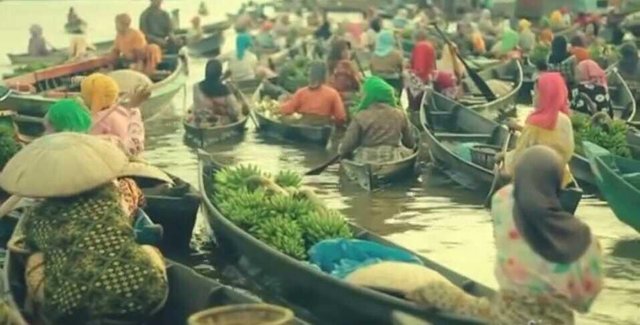
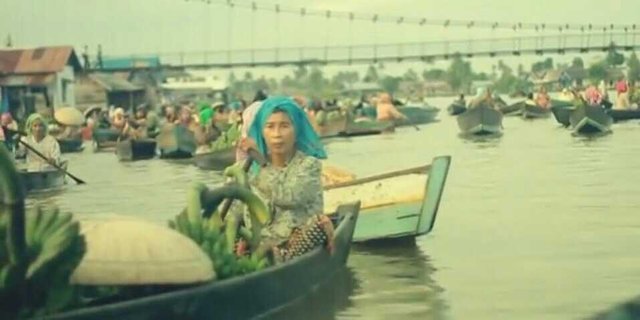
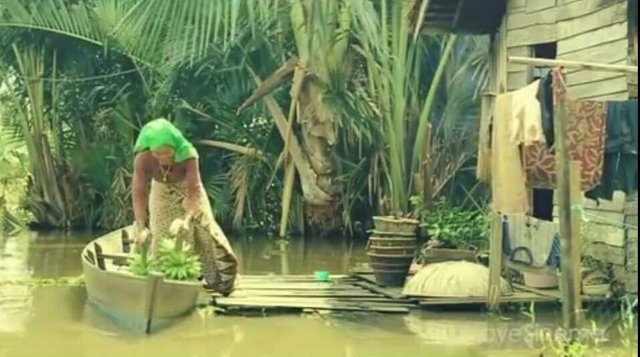
To assure his conjecture, at that time Patih Masih immediately collected the 'rulers' from several ports there namely Patih Balit from Alalak, Patih Muhur from Anjir, and Patih Kuin (his own sister) to invite Samidri to a banquet. With the intoxicating tactics of Samidri who was then given the wine, the hidden secrets were successfully unpacked from the mouth of this 'Lost Prince'.
Well, since the age of 14 years, Samidri directly didaulat and appointed as King 8 Banjar or Raja Bandarmasih. This is because for the four patihs in his blood is still flowing the king's tutus. "At that time, the Floating Market and Bandarmasih Port were very advanced, compared to existing trading ports such as Marabahan (Barito Kuala District) or Nagara River itself, where the Sultan's grandfather empire," said Ayip.
According to Ayip, the existence of Bandarmasih Port and Floating Market also can not be separated from the development of Banjar Kingdom both economically and politically. Where, at the center of the Banjar Kingdom in Kuin, many traders from Java, Gujarat (India) and China engaged in trading activities with the Banjar people, then.
Politically, the Floating Market area also did not escape into a battleground between the Kingdom of Banjar with the Kingdom of Daha State, which only triggered a family revenge. After Prince Tumenggung learned that his nephew who was exiled, was appointed king and ruled Bandar Bandar rival Nagara Kingdom.
The war began sporadically, until finally the invasion of the Kingdom of Daha. In fact, the troops of the Kingdom of Banjar had blocked Daha State troops in the Alalak River area. However, due to the strong losses both in terms of weaponry and personnel, Banjar forces finally pushed into the 'forbidden area' of the kingdom of Banjar in the region of Kuin. In order not to continue pressed, the kingdom of Banjar Kingdom took the initiative to create a fortress from the threat of attack Daha State Royal Army. Precisely, in Cerucuk Kuin area plugged pole-every wood ulin as a buffer so that enemy boats can not lean directly to the Port of Bandarmasih, until now the name of Cerucuk Kuin immortalized as the name of the village located in the area of West Banjarmasin. "At that time, the war took place in the Alalak and Kuin Rivers, but the forces of Nagara Dipa were larger than the Banjar Forces until they were pushed," said Ayip.
After continuing to defeat, at the suggestion of Patih Masih who has trade and political relations with traders from Java, especially from the Islamic Mataram Kingdom, woven military relations. However, in fact, this version of Ayip is different from the version mostly written in the history of the kingdom of Banjar, where the Kingdom of Demak that has helped the Sultan Suriansyah in expelling forces Daha Kingdom. "At that time the Kingdom of Demak began to collapse, and replaced the Islamic Mataram Empire, although in fact the control of the government is still under the Kingdom of Cirebon," said Ayip who believe the story version he got from the accounting of his predecessor.
Help from the Islamic Mataram Kingdom came. However, the aid is not 'free', because there are several conditions that must be fulfilled by the Banjar Kingdom, if the civil war is won by Suriansyah Sultan, then the Banjar Kingdom must be willing to be a fusion or part of the Islamic Mataram Kingdom and Islam is recognized as the official religion of the kingdom.
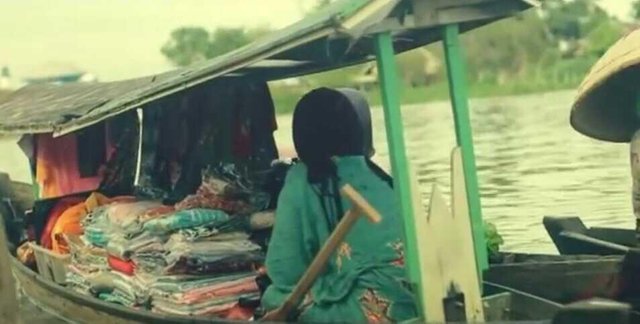
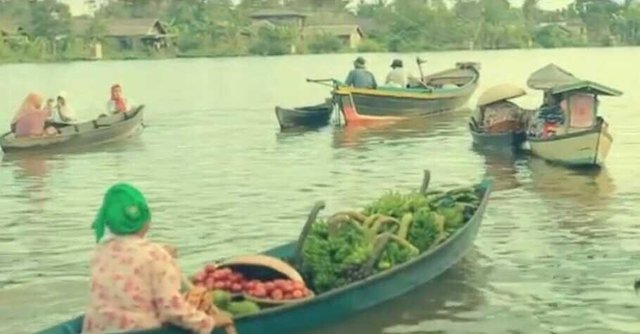
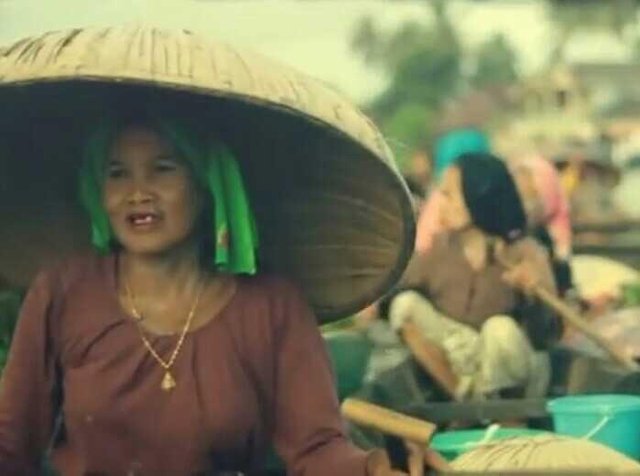
The requirement was approved, to send about 1,000 troops from the Islamic Mataram kingdom under the leadership of Fatahillah or named Sharif Hidayatullah, to be known as Khatib Dayan, although his real name is Khatib Dayat (originated from Hidayatullah), because lidan Urang Banjar is somewhat depth, to be called Khatib Dayan only. "However, Fatahillah is not Fatahillah known as Sunan Gunung Jati, because at that time there were two Fatahillah names who were warlords as well as ulama," said Ayip.
With the help of the Kingdom of Mataram, the troops of the Kingdom of Banjar managed to 'expel' the forces of the Kingdom of Daha even attacked the territory of the kingdom. However, casualties still fall from both sides.
For that agreed arbitasi or peace. The proposed war of compete or compete between Sultan Suriansyah and Prince Tumenggung was chosen as an effort to solve a prolonged civil war. This offer is accrued by both parties, until there is a 'proxy' fight on two boats. For the Sultan of Suriansyah, then it was pedaled by Patih Masih, while Prince Tumenggung on a boat pedaled by Arya Trantis-was the uncle of Sultan Suriansyah himself before he was exiled to Muara Banjar.
"At that moment, Prince Tumenggung actually cried when he heard the bitter story that his nephew experienced, so when it was immediately agreed the war ended and peace," said Ayip. Since then, the two kingdoms namely the Kingdom of Banjar and the Kingdom of Nagara Daha are combined in a 'command' of Sultan Suriansyah. "Since then, Floating Market has developed naturally, because some traders also come from Nagara," said Ayip.
Until now, the historical site of the Floating Market, and the tombs of the King of Banjar is still preserved in the area of the Tomb of Sultan Suriansyah, North Kuin, about 4 kilometers from downtown Banjarmasin.
Follow me @sriwahyuni
Well, since the age of 14 years, Samidri directly didaulat and appointed as King 8 Banjar or Raja Bandarmasih. This is because for the four patihs in his blood is still flowing the king's tutus. "At that time, the Floating Market and Bandarmasih Port were very advanced, compared to existing trading ports such as Marabahan (Barito Kuala District) or Nagara River itself, where the Sultan's grandfather empire," said Ayip.
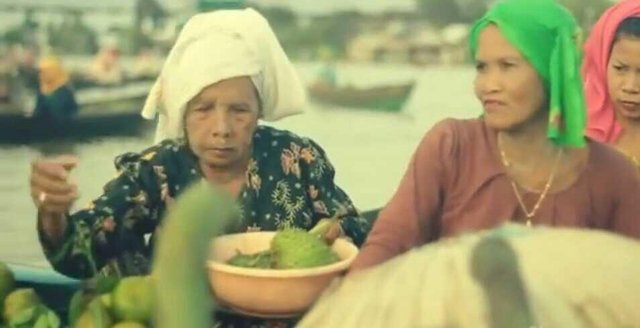
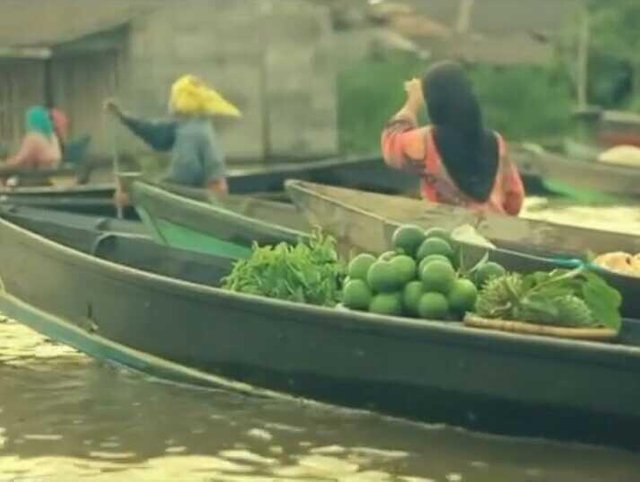
According to Ayip, the existence of Bandarmasih Port and Floating Market also can not be separated from the development of Banjar Kingdom both economically and politically. Where, at the center of the Banjar Kingdom in Kuin, many traders from Java, Gujarat (India) and China engaged in trading activities with the Banjar people, then.
Politically, the Floating Market area also did not escape into a battleground between the Kingdom of Banjar with the Kingdom of Daha State, which only triggered a family revenge. After Prince Tumenggung learned that his nephew who was exiled, was appointed king and ruled Bandar Bandar rival Nagara Kingdom.
The war began sporadically, until finally the invasion of the Kingdom of Daha. In fact, the troops of the Kingdom of Banjar had blocked Daha State troops in the Alalak River area. However, due to the strong losses both in terms of weaponry and personnel, Banjar forces finally pushed into the 'forbidden area' of the kingdom of Banjar in the region of Kuin. In order not to continue pressed, the kingdom of Banjar Kingdom took the initiative to create a fortress from the threat of attack Daha State Royal Army. Precisely, in Cerucuk Kuin area plugged pole-every wood ulin as a buffer so that enemy boats can not lean directly to the Port of Bandarmasih, until now the name of Cerucuk Kuin immortalized as the name of the village located in the area of West Banjarmasin. "At that time, the war took place in the Alalak and Kuin Rivers, but the forces of Nagara Dipa were larger than the Banjar Forces until they were pushed," said Ayip.
After continuing to defeat, at the suggestion of Patih Masih who has trade and political relations with traders from Java, especially from the Islamic Mataram Kingdom, woven military relations. However, in fact, this version of Ayip is different from the version mostly written in the history of the kingdom of Banjar, where the Kingdom of Demak that has helped the Sultan Suriansyah in expelling forces Daha Kingdom. "At that time the Kingdom of Demak began to collapse, and replaced the Islamic Mataram Empire, although in fact the control of the government is still under the Kingdom of Cirebon," said Ayip who believe the story version he got from the accounting of his predecessor.
Help from the Islamic Mataram Kingdom came. However, the aid is not 'free', because there are several conditions that must be fulfilled by the Banjar Kingdom, if the civil war is won by Suriansyah Sultan, then the Banjar Kingdom must be willing to be a fusion or part of the Islamic Mataram Kingdom and Islam is recognized as the official religion of the kingdom.
The requirement was approved, to send about 1,000 troops from the Islamic Mataram kingdom under the leadership of Fatahillah or named Sharif Hidayatullah, to be known as Khatib Dayan, although his real name is Khatib Dayat (originated from Hidayatullah), because lidan Urang Banjar is somewhat depth, to be called Khatib Dayan only. "However, Fatahillah is not Fatahillah known as Sunan Gunung Jati, because at that time there were two Fatahillah names who were warlords as well as ulama," said Ayip.
With the help of the Kingdom of Mataram, the troops of the Kingdom of Banjar managed to 'expel' the forces of the Kingdom of Daha even attacked the territory of the kingdom. However, casualties still fall from both sides.
For that agreed arbitasi or peace. The proposed war of compete or compete between Sultan Suriansyah and Prince Tumenggung was chosen as an effort to solve a prolonged civil war. This offer is accrued by both parties, until there is a 'proxy' fight on two boats. For the Sultan of Suriansyah, then it was pedaled by Patih Masih, while Prince Tumenggung on a boat pedaled by Arya Trantis-was the uncle of Sultan Suriansyah himself before he was exiled to Muara Banjar.
"At that moment, Prince Tumenggung actually cried when he heard the bitter story that his nephew experienced, so when it was immediately agreed the war ended and peace," said Ayip. Since then, the two kingdoms namely the Kingdom of Banjar and the Kingdom of Nagara Daha are combined in a 'command' of Sultan Suriansyah. "Since then, Floating Market has developed naturally, because some traders also come from Nagara," said Ayip.
Until now, the historical site of the Floating Market, and the tombs of the King of Banjar is still preserved in the area of the Tomb of Sultan Suriansyah, North Kuin, about 4 kilometers from downtown Banjarmasin.
Follow me @sriwahyuni
very useful post i like this and i will follow you for so on
Downvoting a post can decrease pending rewards and make it less visible. Common reasons:
Submit